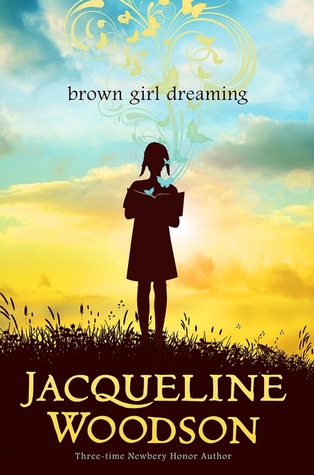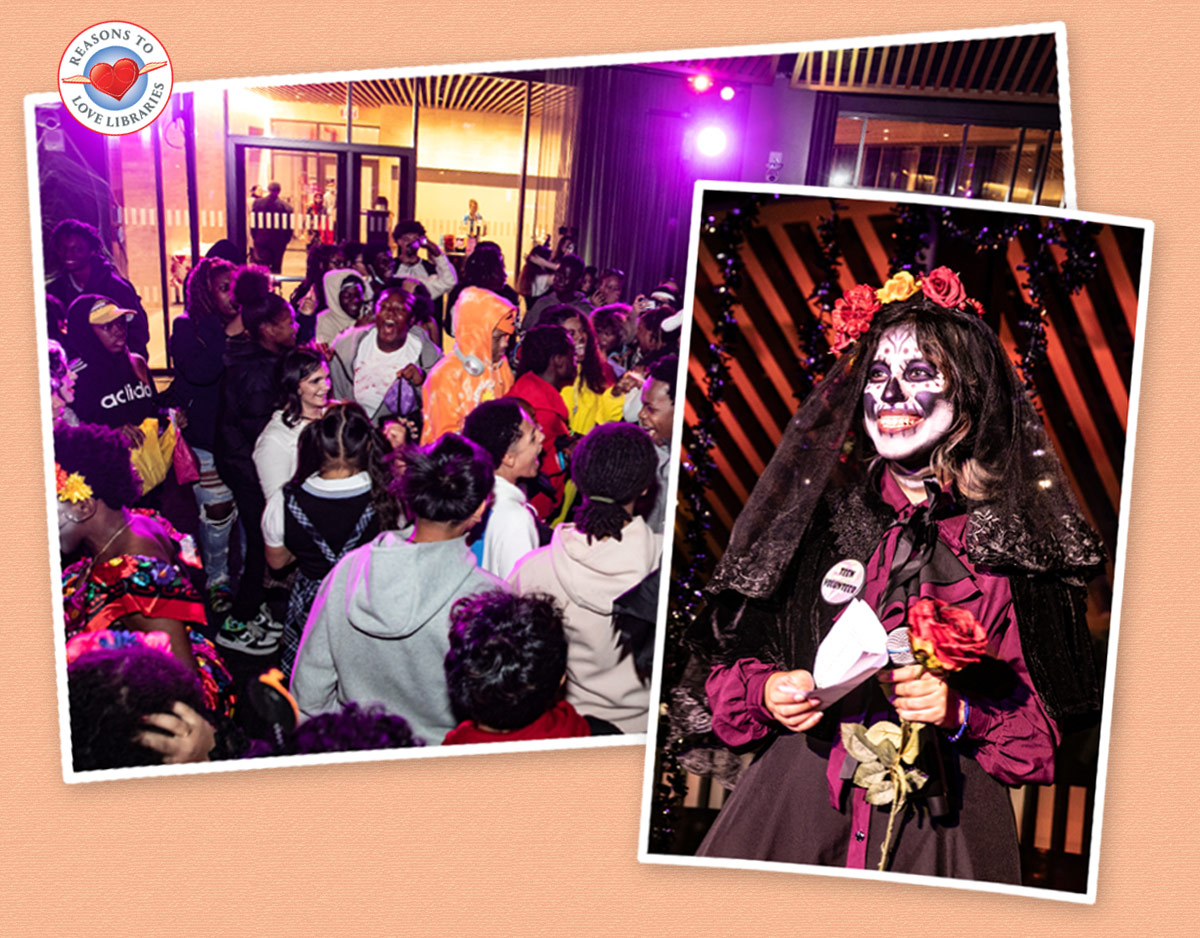Review of the Day: brown girl dreaming by Jacqueline Woodson
 brown girl dreaming
brown girl dreaming
By Jacqueline Woodson
Nancy Paulsen Books (an imprint of Penguin)
$16.99
ISBN: 978- 0399252518
Ages 9-12
On shelves August 28th
What does a memoir owe its readers? For that matter, what does a fictionalized memoir written with a child audience in mind owe its readers? Kids come into public libraries every day asking for biographies and autobiographies. They’re assigned them with the teacher’s intent, one assumes, of placing them in the shoes of those people who found their way, or their voice, or their purpose in life. Maybe there’s a hope that by reading about such people the kids will see that life has purpose. That even the most high and lofty historical celebrity started out small. Yet to my mind, a memoir is of little use to child readers if it doesn’t spend a significant fraction of its time talking about the subject when they themselves were young. To pick up brown girl dreaming by Jacqueline Woodson is to pick up the world’s best example of precisely how to write a fictionalized memoir. Sharp when it needs to be sharp, funny when it needs to be funny, and a book that can relate to so many other works of children’s literature, Woodson takes her own life and lays it out in such a way that child readers will both relate to it and interpret it through the lens of history itself. It may be history, but this is one character that will give kids the understanding that nothing in life is a given. Sometimes, as hokey as it sounds, it really does come down to your dreams.
Her father wanted to name her “Jack” after himself. Never mind that today, let alone 1963 Columbus, Ohio, you wouldn’t dream of naming a baby girl that way. Maybe her mother writing “Jacqueline” on her birth certificate was one of the hundreds of reasons her parents would eventually split apart. Or maybe it was her mother’s yearning for her childhood home in South Carolina that did it. Whatever the case, when Jackie was one-years-old her mother took her and her two older siblings to the South to live with their grandparents once and for all. Though it was segregated and times were violent, Jackie loved the place. Even when her mother left town to look for work in New York City, she kept on loving it. Later, her mother picked up her family and moved them to Brooklyn and Jackie had to learn the ways of city living versus country living. What’s more, with her talented older siblings and adorable baby brother, she needed to find out what made her special. Told in gentle verse and memory, Jacqueline Woodson expertly recounts her own story and her own journey against a backdrop of America’s civil rights movement. This is the birth of a writer told from a child’s perspective.
ADVERTISEMENT
ADVERTISEMENT
You might ask why we are referring to this book as a work of historical fiction, when clearly the memoir is based in fact. Recently I was reading a piece in The New Yorker on the novelist Edward St. Aubyn. St. Aubyn found the best way to recount his own childhood was through the lens of fiction. Says the man, “I wanted the freedom and the sublimatory power of writing a novel . . . And I wanted to write in the tradition which had impressed me the most.” Certainly there’s a much greater focus on what it means to be a work of nonfiction for kids in this day and age. Where in the past something like the Childhood of Famous Americans series could get away with murder, pondering what one famous person thought or felt at a given time, these days we hold children’s nonfiction to a much higher standard. Books like Vaunda Micheaux Nelson’s No Crystal Stair, for example, must be called “fiction” for all that they are based on real people and real events. Woodson’s personal memoir is, for all intents and purposes, strictly factual but because there are times when she uses dialogue to flesh out the characters and scenes the book ends up in the fiction section of the library and bookstore. Like St. Aubyn, Woodson is most comfortable when she has the most freedom as an author, not to be hemmed in by a strict structural analysis of what did or did not occur in the past. She has, in a sense then, mastered the art of the fictionalized memoir in a children’s book format.
Because of course in fiction you can give your life a form and a function. You can look back and give it purpose, something nonfiction can do but with significantly less freedom. There is a moment in Jackie’s story when you get a distinct sense of her life turning a corner. In the section “grown folks’ stories” she recounts hearing the tales of the old people then telling them back to her sister and brother in the night. “Retelling each story. / Making up what I didn’t understand / or missed when voices dropped too low . . . / Then I let the stories live / inside my head, again and again / until the real world fades back / into cricket lullabies / and my own dreams.” If ever you wanted a “birth of a writer” sequence in a book, this would be it.
At its heart, that’s really what brown girl dreaming is about. It’s the story of a girl finding her voice and her purpose. If there’s a theme to children’s literature this year it is in the relationship between stories and lies. Jonathan Auxier’s The Night Gardener and Margi Preus’s West of the Moon both spend a great deal of time examining the relationship between the two. Now brown girl dreaming joins with them. When Jackie’s mother tells her daughter that “If you lie . . . one day you’ll steal” the child cannot reconcile the two. “It’s hard to understand how one leads to the other, / how stories could ever / make us criminals.” It’s her mother that equates storytelling with lying, even as her uncle encourages her to keep making up stories. As it is, I can think of no better explanation of how writers work then the central conundrum Jackie is forced to face on her own. “It’s hard to understand / the way my brain works – so different / from everybody around me. / How each new story / I’m told becomes a thing / that happens, / in some other way / to me . . . !”
The choice to make the book a verse novel made sense in the context of Ms. Woodson’s other novels. Verse novels are at their best when they justify their form. A verse novel that’s written in verse simply because it’s the easiest way to tell a long story in a simple format often isn’t worth the paper it’s printed on. Fortunately, in the case of Ms. Woodson the choice makes infinite sense. Young Jackie is enamored of words and their meanings. The book isn’t told in the first person, but when we consider that she is both subject and author then it’s natural to suspect that the verse best shows the lens through which Jackie, the child, sees the world.
It doesn’t hurt matters any that the descriptive passages have the distinct feeling of poems to them. Individual lines are lovely in and of themselves, of course. Lines like “the heat of summer / could melt the mouth / so southerners stayed quiet.” Or later a bit of reflection on the Bible. “Even Salome intrigues us, her wish for a man’s head / on a platter – who could want this and live / to tell the story of that wanting?” But full-page written portions really do have the feel of poems. Like you could pluck them out of the book and display them and they’d stand on their own, out of context. The section labeled “ribbons” for example felt like pure poetry, even as it relayed facts. As Woodson writes, “When we hang them on the line to dry, we hope / they’ll blow away in the night breeze / but they don’t. Come morning, they’re right where / we left them / gently moving in the cool air, eager to anchor us / to childhood.” And so we get a beautiful mixing of verse and truth and fiction and memoir at once.
ADVERTISEMENT
ADVERTISEMENT
It was while reading the book that I got the distinct sense that this was far more than a personal story. The best memoirs, fictionalized or otherwise, are the ones that go beyond their immediate subjects and speak to something greater than themselves. Ostensibly, brown girl dreaming is just the tale of one girl’s journey from the South to the North and how her perceptions of race and self changed during that time. But the deeper you get into the book the more you realize that what you are reading is a kind of touchstone for other children’s books about the African-American experience in America. Turn to page eight and a reference to the Woodsons connections to Thomas Woodson of Chillicothe leads you directly to Jefferson’s Sons by Kimberly Brubaker Bradley. Page 32 and the trip from North to South and the deep and abiding love for the place evokes The Watsons Go to Birmingham – 1963. Page 259 and the appearance of The Jackson Five and their Afros relates beautifully to Rita Williams-Garcia’s P.S. Be Eleven. Page 297 and a reference to slaves in New York City conjures up Chains by Laurie Halse Anderson. Even Jackie’s friend Maria has a story that ties in nicely to Sonia Manzano’s The Revolution of Evelyn Serrano. I even saw threads from Woodson’s past connect to her own books. Her difficulty reading but love of words conjures up Locomotion. Visiting her uncle in jail makes me think of Visiting Day as well as After Tupac and D Foster. And, of course, her personal history brings to mind her Newbery Honor winning picture book Show Way (which, should you wish to do brown girl dreaming in a book club, would make an ideal companion piece).
It’s not just other books either. Writers are advised to write what they know and that their family stories are their history. But when Woodson writes her history she’s broadening her scope. Under her watch her family’s history is America’s history. Woodson’s book manages to tie-in so many moments in African-American history that kids should know about. Segregation, marches, Jesse Jackson, Martin Luther King Jr. and Malcolm X. One thing I really appreciated about the book was that it also looked at aspects of some African-American life that I’ve just never seen represented in children’s literature before. Can you honestly name me any other books for kids where the children are Jehovah’s Witnesses? Aside from Tom Angleberger’s The Qwikpick Papers I’m drawing a blank.
The flaws? Well it gets off to a slow start. The first pages didn’t immediately grab me, and I have to hope that if there are any kids out there who read the same way that I do, with my immature 10-year-old brain, that they’ll stick with it. Once the family moves to the South everything definitely picks up. The only other objection I had was that I wanted to know so much more about Jackie’s family after the story had ended. In her Author’s Note she mentions meeting her father again years later. What were the circumstances behind that meeting? Why did it happen? And what did Dell and Hope and Roman go on to do with their lives? Clearly a sequel needs to happen. I don’t think I’m alone in thinking this.
I’m just going to get grandiose on you here and say that reading this is basically akin to reading a young person’s version of Song of Solomon. It’s America and its racial history. It’s deeply personal, recounting the journey of one girl towards her eventual vocation and voice. It’s a fictionalized memoir that nonetheless tells greater truths than most of our nonfiction works for kids. It is, to put it plainly, a small work of art. Everyone who reads it will get something different out of it. Everyone who reads it will remember some small detail that spoke to them personally. It’s the book adults will wish they’d read as kids. It’s the book that hundreds of thousands of kids will read and continue to read for decades upon decades upon decades. It’s Woodson’s history and our own. It is amazing.
On shelves August 28th.
Source: Galley sent from publisher for review.
Like This? Then Try:
- One Crazy Summer by Rita Williams-Garcia
- No Crystal Stair by Vaunda Micheaux Nelson
- Zora and Me by Victoria Bond and T.R. Simon
Other Reviews: Richie’s Picks
Misc: A look at the book and an interview with Ms. Woodson from Publishers Weekly.
Videos: In this opening keynote from SLJ’s Day of Dialog in 2014, Ms. Woodson talks about the path to this book.
Jacqueline Woodson keynote | SLJ Day of Dialog 2014 from School Library Journal on Vimeo.
Filed under: Best Books, Best Books of 2014, Reviews, Reviews 2014
About Betsy Bird
Betsy Bird is currently the Collection Development Manager of the Evanston Public Library system and a former Materials Specialist for New York Public Library. She has served on Newbery, written for Horn Book, and has done other lovely little things that she'd love to tell you about but that she's sure you'd find more interesting to hear of in person. Her opinions are her own and do not reflect those of EPL, SLJ, or any of the other acronyms you might be able to name. Follow her on Twitter: @fuseeight.
ADVERTISEMENT
ADVERTISEMENT
SLJ Blog Network
9 Randomly Random Facts About CABOOSE
Recent Graphic Novel Deals, January 2025 | News
Goodbye for now
When Book Bans are a Form of Discrimination, What is the Path to Justice?
RA Tool of the Week: Teen Romance by Trope
ADVERTISEMENT








So glad to read your review of this–it sounds wonderful, and the verse element makes me think of Inside Out and Back Again. And slow starts never bothered me! Not with this sort of story, anywah. Putting it right on my to-read list, and looking forward to getting to it.